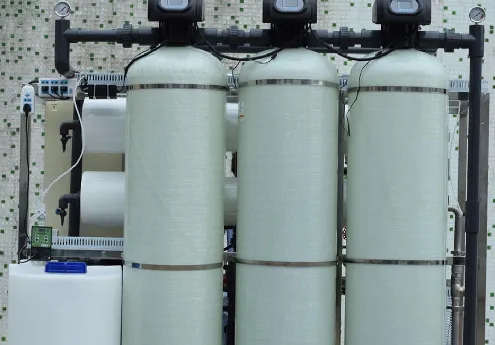loading...
- No. 9, Xingyuan South Street, Dongwaihuan Road, Zaoqiang County, Hengshui, Hebei, China
- admin@zjcomposites.com
- +86 15097380338
- Welcome to visit our website!
Durable Fiberglass Pultruded Grating Solutions for Industrial and Commercial Applications
Exploring Fiberglass Pultruded Grating Advantages and Applications
Fiberglass pultruded grating is quickly gaining traction across various industries thanks to its unique properties and versatile applications. Made through the pultrusion process, this material combines fiberglass and resin, creating a strong, lightweight product that outperforms traditional materials, such as steel or wood, in several ways. This article explores the characteristics, benefits, and applications of fiberglass pultruded grating.
What is Fiberglass Pultruded Grating?
Fiberglass pultruded grating is formed by pulling continuous fiberglass filaments through a resin bath and then through a heated die to create a solid, uniform shape. This process allows for the production of grates in various thicknesses and mesh configurations, tailored to meet specific load requirements and environmental conditions. The resultant product features exceptional durability, corrosion resistance, and low weight, making it an ideal choice for many applications.
Key Advantages
1. Corrosion Resistance One of the standout features of fiberglass grating is its remarkable resistance to corrosion. Unlike steel or wood, which can degrade when exposed to moisture, chemicals, or saltwater, fiberglass maintains its integrity over time. This makes it particularly valuable in industries like wastewater treatment, marine environments, and chemical processing.
2. Lightweight Fiberglass grating is significantly lighter than steel or aluminum. This lightweight nature not only reduces transportation and installation costs but also simplifies design considerations. The ease of handling contributes to enhanced worker safety during installation.
3. High Strength-to-Weight Ratio Despite being lightweight, fiberglass grating boasts an impressive strength-to-weight ratio. It can support significant loads without compromising its structural integrity, making it suitable for various industrial applications.
4. Non-Conductive Fiberglass is a non-conductive material, making it ideal for use in electrical environments or areas prone to static electricity. This property enhances safety in situations where traditional metal grates could pose an electrical hazard.
5. Low Maintenance Fiberglass pultruded grating does not require regular maintenance or repainting, unlike its steel counterparts. This not only saves on long-term maintenance costs but also contributes to more sustainable practices by reducing waste and the need for chemical treatments.
6. Customization Options The flexibility of the pultrusion process allows for the production of grating in various sizes, colors, and styles. Users can specify unique designs that meet architectural or aesthetic requirements while ensuring optimal functionality.
fiberglass pultruded grating

Applications of Fiberglass Pultruded Grating
The versatility of fiberglass pultruded grating means it is utilized across various sectors
- Industrial Facilities Commonly found in factories, plants, and warehouses, fiberglass grating provides safe walking surfaces above machinery, pits, or hazardous materials.
- Wastewater Treatment Its resistance to chemicals and moisture makes it ideal for use in water treatment facilities, where durability and safety are paramount.
- Marine Applications In shipyards and ports, fiberglass grating is used in walkways, docks, and platforms, where it withstands the harsh marine environment without corroding.
- Food Processing Fiberglass is often used in food processing facilities due to its resistance to harsh cleaning chemicals and ability to meet hygiene standards.
- Commercial Buildings Fiberglass grating is also increasingly used in commercial construction for walkways and stairways, adding both functionality and aesthetic appeal to the design.
- Utilities and Power Generation The electrical insulative properties of fiberglass make it suitable for use in power plants and substations, protecting personnel in electrical environments.
Conclusion
In summary, fiberglass pultruded grating represents a significant advancement in materials science, offering a combination of durability, safety, and versatility. Its unique properties make it an outstanding choice for a wide range of applications, providing not only efficiency and cost-effectiveness but also sustainable solutions in challenging environments. As industries continue to seek innovative materials to enhance safety and performance, fiberglass pultruded grating is positioned to play a vital role in the future of construction and engineering.
-
Transform Your Spaces with FRP Grating SolutionsNewsNov.04,2024
-
The Versatility and Strength of FRP RodsNewsNov.04,2024
-
The Excellence of Fiberglass Water TanksNewsNov.04,2024
-
The Benefits of FRP Grating for Your ProjectsNewsNov.04,2024
-
Elevate Your Efficiency with FRP Pressure VesselsNewsNov.04,2024
-
Welcome to the World of FRP Pressure VesselsNewsOct.12,2024
-
Unveiling the Future of Filtration: Why FRP Filter Vessels are a Game ChangerNewsOct.12,2024
